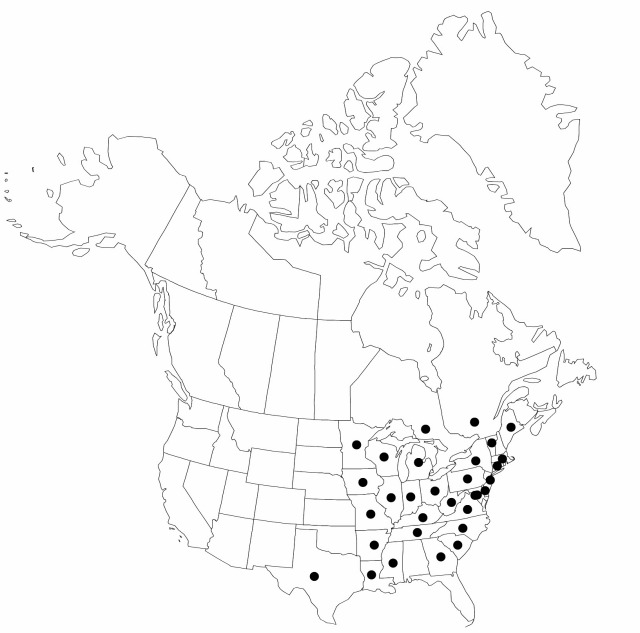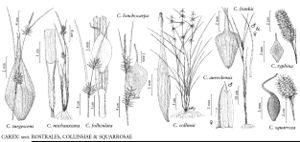Carex typhina
Fl. Bor.-Amer. 2: 169. 1803.
Plants cespitose, short-rhizomatous. Culms 30–80 cm. Leaves 3.9–8.7 mm wide, glabrous. Spikes (1–) 2–4 (–6), erect; lateral spikes usually pistillate; terminal spike gynecandrous; staminate portion 4–11 × 1–3.5 mm; pistillate portion oblong to elliptic, 10–43 × 10–16 mm. Pistillate scales 2.3–5.5 × 1.2–1.7 mm, apex acute, sharp or blunt, hidden by perigynia. Staminate scales 4.2–5.8 × 1.4–2 mm, apex acute, sharp or blunt. Perigynia appressed-ascending, the proximal not reflexed, 5.5–7.8 × 2–3 mm, smooth; beak 2.3–2.9 mm, often sparingly scabrous. Achenes sides often concave, 2–2.6 × 1.4–1.7 mm, 1.2–1.9 times as long as wide; style deciduous, straight.
Phenology: Fruiting summer.
Habitat: Wet woods
Elevation: 0–1000 m
Distribution

Ont., Que., Ark., Conn., Del., D.C., Ga., Ill., Ind., Iowa, Ky., La., Maine, Md., Mass., Mich., Minn., Miss., Mo., N.J., N.Y., N.C., Ohio, Pa., S.C., Tenn., Tex., Vt., Va., W.Va., Wis.
Discussion
Carex ×deamii F. J. Hermann is a sterile hybrid described as a cross between C. shortiana Dewey and C. typhina (F. J. Hermann 1938). See comments under 407. C. shortiana.
Selected References
None.
Lower Taxa
"shortened" is not a number."not undefined" is not a number.
